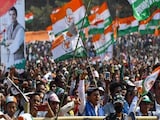The sighting of two Chinese aircraft carriers - Liaoning and Shandong - close to Japan's southern islands conducting operations simultaneously has caused alarm. There have also been multiple reports of the movement of Chinese coast guard vessels near Japanese islands that China claims. Fears have been expressed that China's revised guidelines that empower its Coast Guard personnel to use lethal force for enforcing its territorial claims could lead to a major conflagration.
While it may be difficult to discern the motivations behind Beijing's actions, some clues are contained in the Chinese white paper on national security that was unveiled for the first time recently. China's leadership lays out a complicated global landscape of external and internal challenges in the document. Internationally, the Chinese elite gauge pressure on its security due to sustained turmoil caused by the Russia-Ukraine and India-Pakistan conflicts, and its own great-power competition with America. The ruling Communist Party's priorities have also been ensuring economic growth and maintaining domestic stability. Economic globalisation and the intricacy and intertwining of supply chains led to China's rise.
What Has China Vexed
US President Donald Trump's threat to roll back international trading arrangements has cast a shadow on the trajectory of China's export-led growth model and, consequently, its continuing economic prosperity. The tariff war has shrunk the market for China's exports, hurting not only corporate bottom lines but also the neatly crafted social compact in which the Chinese middle class forgoes its rights in exchange for monetary wellbeing. While the ruling elite are confident that the GDP will grow at "around 5%" this year, a noted Chinese economist, Gao Shanwen, has cast doubts on the reliability of government statistics in China and the Party's ability to shore up the economy.
President Xi Jinping has spoken publicly, stating that it is the US that it seeks to contain, suppress and encircle, by reviving old alliances and striking new partnerships. There is also the challenge posed by technological advances in Artificial Intelligence, from which Beijing seeks to benefit but hopes to minimise any fallout.
Additionally, there is a fear of threats posed by extremism, attempts at colour revolution and regime change, and ethnic and religious fissures that can challenge the social order.
These are the variables that the white paper openly or obliquely mentions as having a bearing on China's national security. Thus, both these planks of economic prosperity and domestic order are under strain.
The Churn Within The PLA
Even as the economy gives no reason for cheer, there are troublesome issues with the People's Liberation Army (PLA), the Party's praetorian guard. While there has been a purge within the PLA's military industrial complex for some time, now, big names that preside over its apex oversight body, the Central Military Commission (CMC), seem to be in the crossfire. Miao Hua, a CMC member and a Xi acolyte, was suspended last year. His profile was scrubbed off the Defence Ministry's website recently. CMC Vice-Chair He Weidong has also not been seen in public since the National People's Congress in March. Former CMC Vice-Chair Xu Qiliang, who otherwise seemed hale and hearty, died of a heart attack recently. Lastly, China's Defence Minister Dong Jun skipped the high-profile Shangri-la Dialogue this year and, instead, heads of the country's military institutions filled in. Thus, the issue of graft has tarred the military top brass.
Back to the sightings of Chinese aircraft carriers in Japan's seas. Tokyo perceives it as a bid by Beijing to improve its ability to operate in foreign theatres. In February, the PLA conducted live-fire naval exercises near Australia that led to commercial flights being diverted. In the aftermath of the April 22 Pahalgam terror attack, there is evidence that China is arming Pakistan and giving it cover fire on the diplomatic front against India. There may be a tendency to view this development in isolation, but an unusually large movement of Chinese naval and coast guard vessels has been seen near Taiwan, Japan's southern Japanese islands and the East and South China Seas in the last two months.
Desperate Attempts
There is a pattern to Beijing's renewed aggression. First, during Trump 1.0, a deteriorating China-US relationship in 2020 led to Beijing's military coercion against Japan over the Senkaku Islands. In the same year, Chinese and Indian soldiers died in clashes at Galwan, and it was followed by a tense military standoff. In 2025, too, in the wake of Trump 2.0's renewed trade war, Washington's allies and partners are the targets. Second, the subtext of the national security white paper is clear: it paints the US as a villain, while China is portrayed as a victim, striving to "achieve peace for the last 5,000 years".
As Xi suffers reversals on different fronts and perceived threats to regime survival, he may seek external aggression in a bid to rally the people, Party and personnel behind him. New Delhi needs to keep a close eye on these developments as it searches for a new modus vivendi with Beijing.
(Harsh V Pant is Vice President, Observer Research Foundation, New Delhi. Kalpit Mankikar is Fellow, China Studies, at ORF.)
Disclaimer: These are the personal opinions of the author















